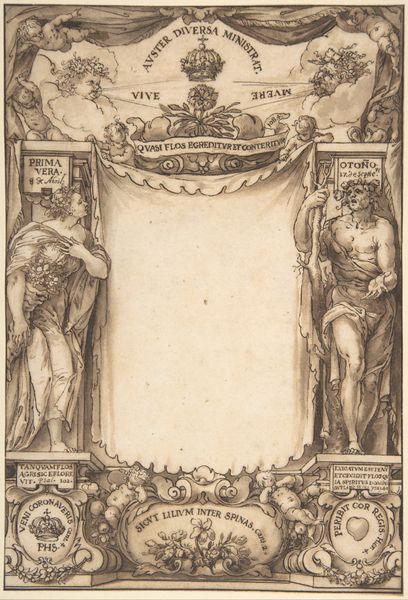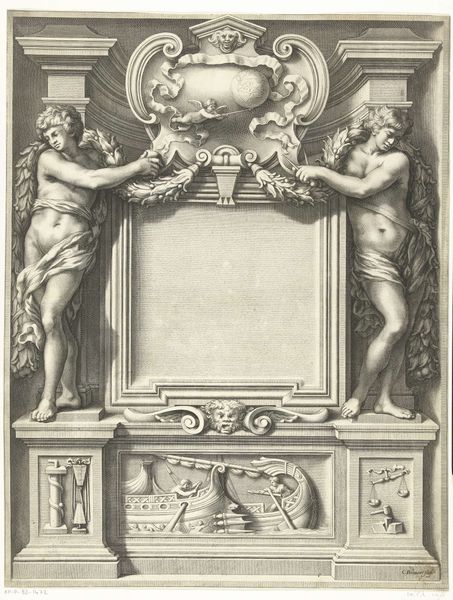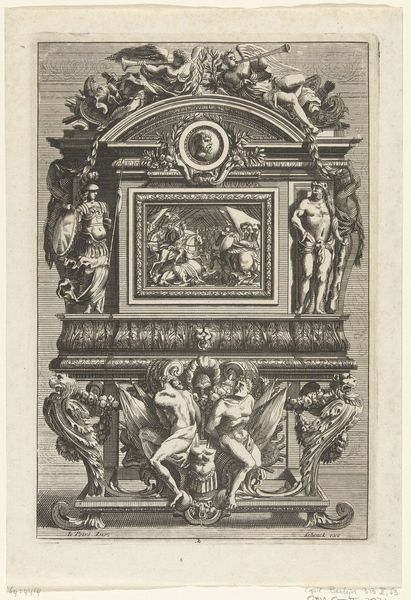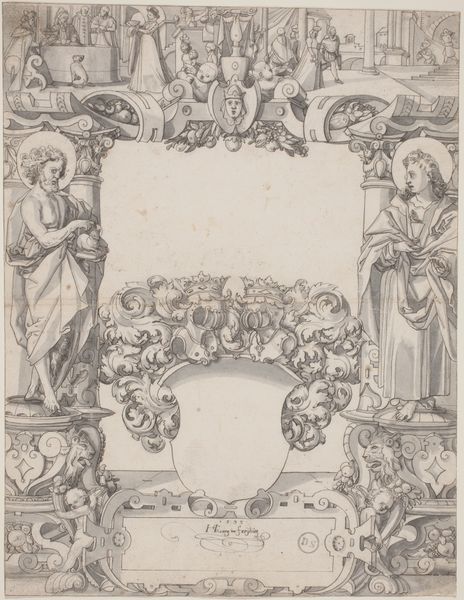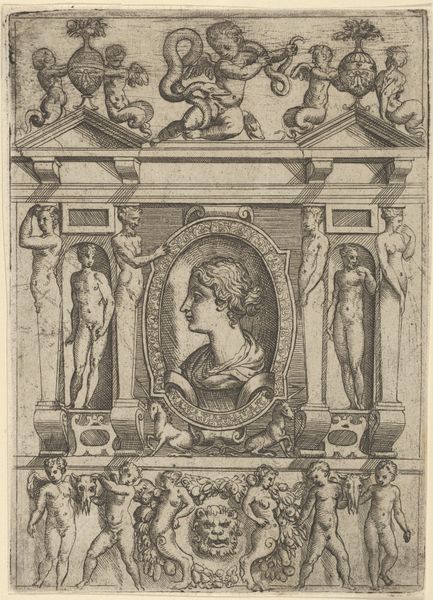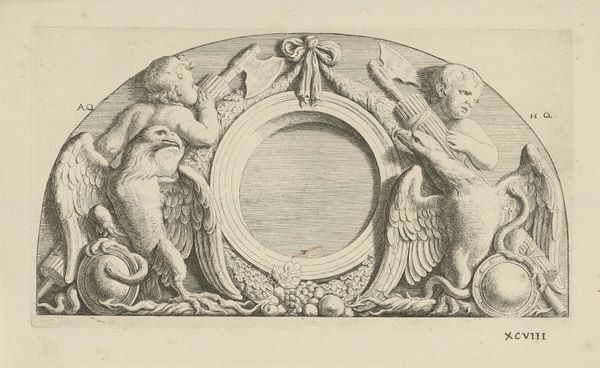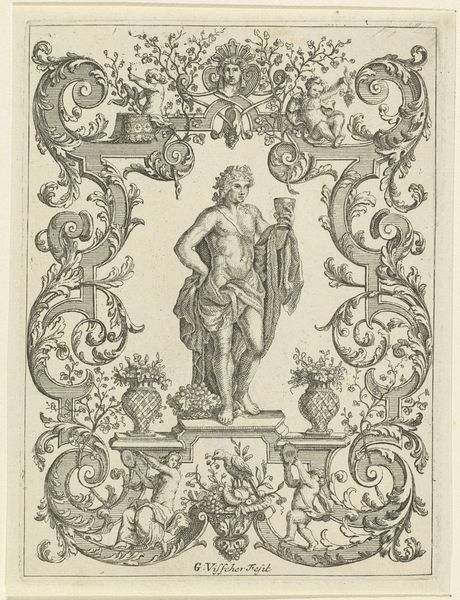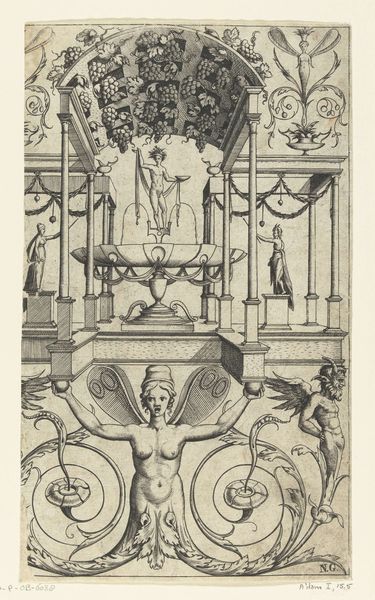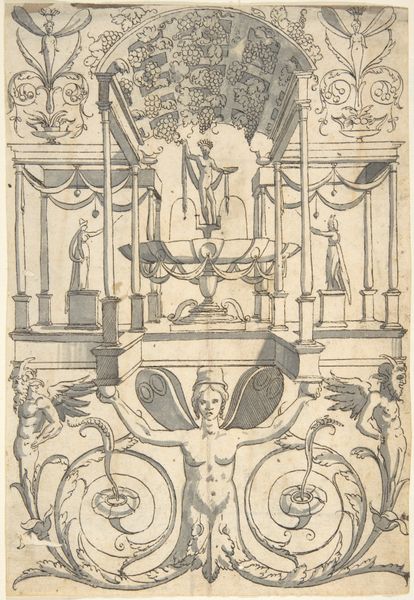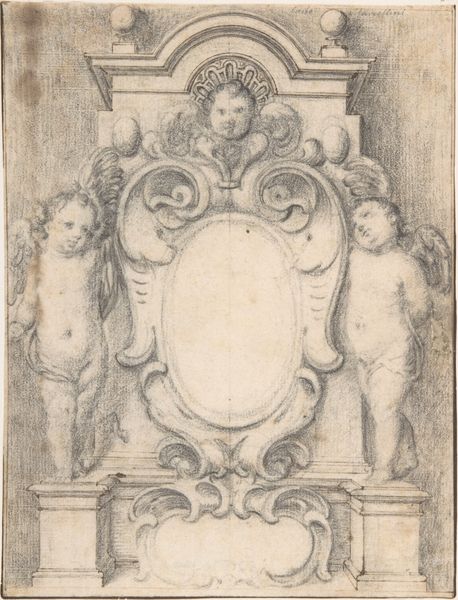
drawing, paper, ink
#
pencil drawn
#
drawing
#
allegory
#
pencil sketch
#
charcoal drawing
#
mannerism
#
paper
#
ink
#
pencil drawing
#
nude
Dimensions: height 270 mm, width 203 mm
Copyright: Rijks Museum: Open Domain
Curator: Look at this fascinating drawing, "Ontwerp voor een wanddecoratie," or "Design for a Wall Decoration" attributed to Cigoli, dating from around 1569 to 1610. It's rendered in ink, pencil and charcoal on paper. Editor: It’s haunting. That central mask at the top, framed by cherubs, gives me the chills. Is that the keystone? It dominates the whole sketch. Curator: Exactly. This design reveals a lot about the artistic labor behind these decorative structures, the processes and draftsmanship required for realizing grand Mannerist schemes. Editor: I see that! But let's unpack those layers. The nudes flanking what would presumably be a framed area feel very intentional. Who were the actual bodies that sculptors used for this decorative process and what kind of societal power dynamics played into their representation here? Curator: The nude female figures definitely play with classical tropes adapted for a sixteenth-century context. I think this drawing allows us to reflect on the artistic process of the period. The materials speak volumes, showing how the high arts relied on "low" skills like sketching and preparatory studies to achieve complex design. Editor: But it feels like a highly controlled kind of expression. The whole piece presents this idea of femininity packaged and displayed within rigid architectural forms. Those bodies become components, contributing to the whole, divorced from their own realities and autonomy. Curator: True, the Mannerist style does tend to subordinate figures to overall aesthetic effect. You’re making me think of the potential workshops where this could have been produced. Who were the craftspeople contributing to the finished artwork? Were their names recorded, or was all the credit given to Cigoli? Editor: It prompts us to confront uncomfortable truths about art and labor across time. The beautiful sketch is built upon layers of forgotten effort and historical inequity. Curator: Absolutely. It's the paradox of these preparatory sketches, isn't it? They invite us to celebrate artistic virtuosity while simultaneously underscoring the social conditions of artistic production. Editor: Well said! Next time I'm tempted to overlook preparatory work, I’ll try to remember to unpack these questions that lie within the marks and the choices, challenging the narrative of solely celebrated artist as auteur.
Comments
No comments
Be the first to comment and join the conversation on the ultimate creative platform.

